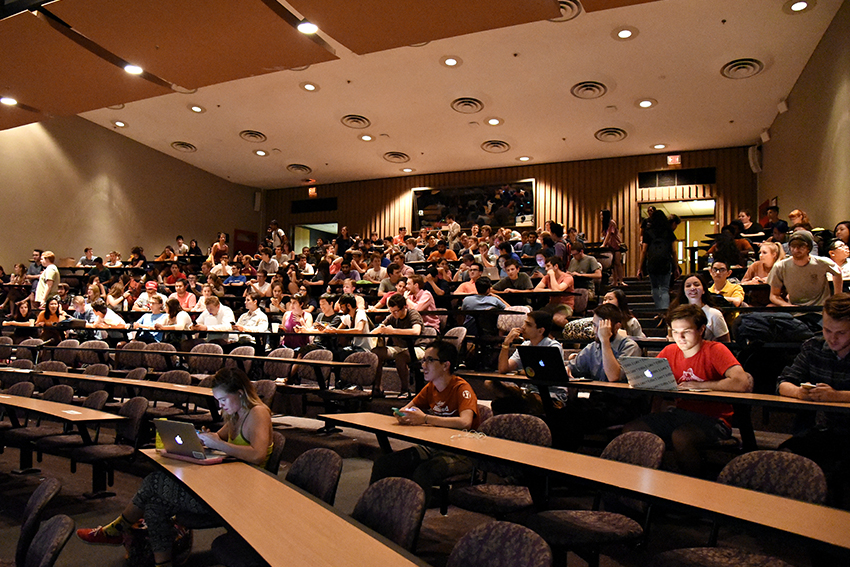The obstacles that are present with the larger classroom size begin to affect the academic success of students due to the increase in distractions and the decrease in the ability to have intimate professor-student interactions. Students should look into taking smaller classes, but when that is not a feasible option, they should look into ways to make their large classes feel small.
A landmark study in 1978 showed that as class size decreases, achievement increases and significant benefits begin to emerge as class size falls below 20 students. A more recent 2008 study showed test scores were lower in larger classes. With this, smaller classes seem to provide a more successful learning environment.
Lynda Gonzalez, journalism and Latin American studies graduate student and TA, believes that smaller, seminar-style courses or lab sections create a space that encourages greater participation compared to larger lecture classes.
“Some factors about large classrooms might hinder [students’] success in the sense that it’s easy for a student to go unnoticed in a large sea of people,” Gonzalez said in an email. “This setting doesn’t hold students accountable for actually paying attention in class. In the long run, these are crucial interpersonal skills that students need to have developed by the time they graduate.”
While a large classroom has the ability to hinder a person’s success, students still must learn the abilities to cope with them.
“As a former high school teacher, I had students specifically choose to go to smaller universities because they wanted all of their classes to be small, but in the long run, they might miss out on building public speaking skills for addressing larger audiences,” Gonzalez said.
In many cases, class size is not the key to a student’s success. Rather, an “engaging, organized and approachable professor makes the biggest difference regardless of the class size,” Caroline Covington, journalism graduate student and TA, said.
While some people may argue that decreasing class size will be coupled with an increase in financial expenditures on behalf of the institution in order to employ more professors to meet the proper student-teacher ratio, it’d be worth it. The academic success of the students will reap the benefits caused by this change, and the overall learning process will be improved.
It is almost inevitable that students at some point in their college career will be placed into a large class. To overcome this, Kyser Lough, journalism graduate student and TA, suggests making an effort to sit closer to the front, not feeling shy about asking questions during class and taking advantage of office hours to remove the barriers that hinder student success within large classes.
When walking into your introductory biology class, don’t become overwhelmed by the massive size of the lecture hall — rather, overcome the size by utilizing smart tools to make the large class feel small.
Lassmann is a journalism freshman from League City. Follow her on Twitter @AnnaLassmann.





















